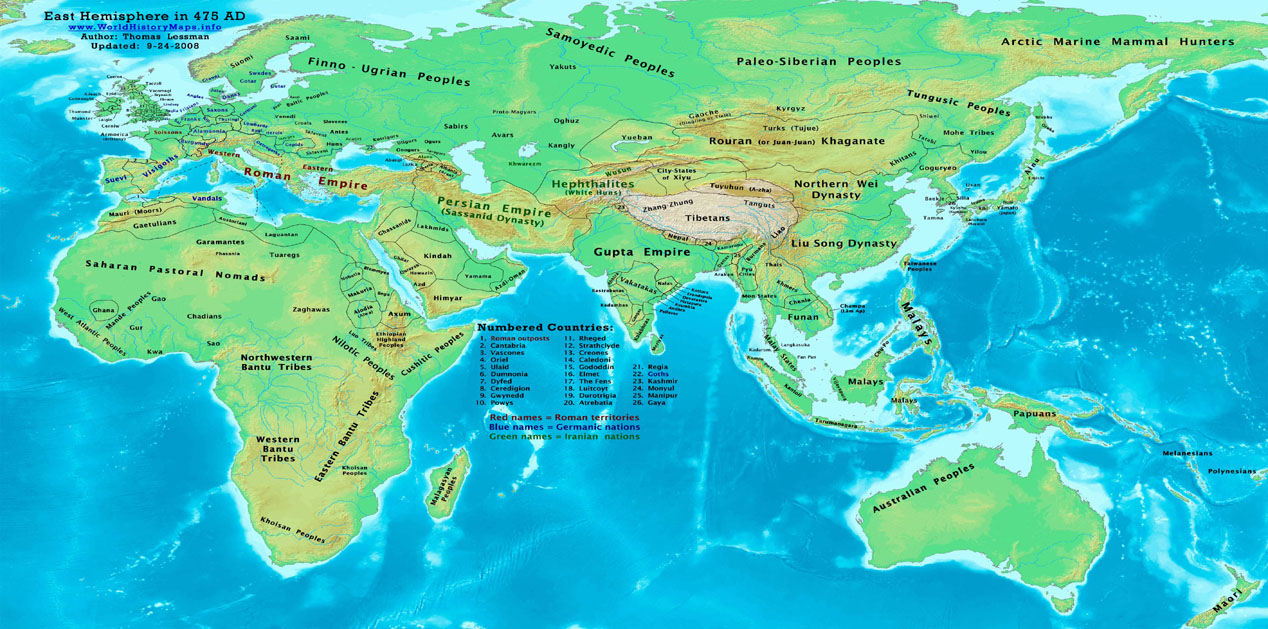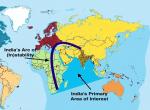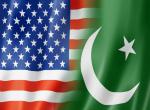Introduction
Notwithstanding its unique advantages of impressive economic growth, young, dynamic and increasingly skilled workforce, large untapped market and strategic location, South Asia has not been able to take off effectively and continues to be among the least integrated regions in the world. Alternatively, its next door neighbour China’s tremendous rise, fuelled by its miraculous economic growth for over three decades has transformed the economic landscape of the world. However as the world now deals with a “new normal” of slowdown of the Chinese economy, South Asia offers one of the few bright spots in the world which is able to adjust itself to the Chinese slowdown (Wignaraja, 2016).Moreover, despite the trust deficit and extreme nationalism among the countries of South Asia, the region’s strategic location by virtue of being positioned at the junction of many other regions and its access to strategic SLOCs1 like the Indian Ocean through which over 80% of the world’s seaborne trade in oil transits through, has made it a very attractive zone for great powers like Great Britain, the US and now increasingly China to get involved in it (De Silva-Ranasinghe, 2016).But what makes the study of China’s manoeuvres in the region very fascinating is that unlike other Great Powers, the nature of its interests are very vital and everlasting in South Asia (Bukhari and Bakht, 2013).
This paper attempts to understand the factors motivating Great Powers’ participation in regionalisation processes, specifically examining China’s recent and increasing inroads in South Asia. It further seeks to analyse whether this will be beneficial for regional integration in South Asia by taking into consideration the interests ofdominant regional powers like India which enjoy tremendous influence in the region.
China’s increasing Inroads in South Asia
China and South Asia historically enjoyed good cultural and economic relations with each other. For instance, the Han Dynasty had well developed business relations with Jibin (Kashmir) in the second century while formal relations were also observed between the region and China when the Gupta Dynasty came to power in India in 428 AD (Bukhari and Bakht, 2013).More meaningful interactions also started to emerge from the 5th century AD onwards when Buddhism arrived in China from South Asia (Ali, 2010). Existence of trade links like the ancient Silk Route also helped in connecting the two regions with other parts of Asia like Central and Southeast Asia. But such exchanges gradually declined after the advent of colonialism in Asia.
Since gaining independence in 1949, China followed a bilateral approach to its relations with South Asian countries. However due to the region’s increasingly multi-polar order with the presence of traditional heavyweight, India and other extra-regional powers like the US and Japan, China during the last decades has shown a gradual departure from engaging bilaterally to adopting a more multilateral posture in South Asia (Papatheologou, Naseer and Amin, 2014). At the 18th SAARC Summit in Kathmandu, Beijing was vocal in pitching for a greater role for itself in SAARC to see itself as a full-fledged member although it appears willing to be a “dialogue-partner” in SAARC for now (Chansoria, 2015). In order to lure the region, China has expressed its commitment to provide 10,000 scholarships and 30 billion USD as infrastructure development aid to the region (Zehra, 2015). This is in addition to the 25 billion USD of trade that it already does with SAARC countries[with the exception of India] (Chansoria, 2015). Moreover, in its effort to enhance its influence in the region, China recently has also accepted to be involved in Afghanistan through multilateral platforms such as the Quadrilateral Coordination Group(Curtis, 2016).
China has correspondingly stepped up its interest in the region not only through SAARC but also through various sub-regional cooperation initiatives such as the China Pakistan Economic Corridor (CPEC), China-Nepal-India (CNI) and Bangladesh-China-India-Myanmar (BCIM) etc. These are ambitious transportation corridors connected to its OBOR initiative which has the potential to significantly increase Chinese influence in the region. Moreover besides luring the South Asian countries with substantial military and economic aids, China is also trying to woo this region through persuasive multilateral engagements by establishing forums like the Trans-Himalayan Development Forum, China- South Asia Cultural Forum, China-South Asia Business Forum, China-SAARC Economic and Trade Forum etc which are not only regional but sub-regional too (Singh, 2016).
Additionally, Beijing is also concerned about addressing terrorism threats emanating from a section of its Muslim population, particularly the Uyghurs in Xinjiang Uighur Autonomous Region which borders South Asia and with whom its relations have been particularly tense (Lamb and Small, 2014). China is similarly also very sensitive about the Tibet issue which regularly comes into focus during its talks with India and Nepal. Therefore for the development of these two regions, China holds tremendous priority to its relationship with South Asia.
Factors Motivating China’s Interest in the Region
It is generally acknowledged that Great Powers participate in regional integration processes to increase their influence in the international economic and political arena. By virtue of their exceptional market scale, industrial structure and military and economic power, Great Powers’ participation in regional integration can dominate the development of regionalism and also have a long term structural influence on the region (Hao, 2009). But China’s interest in South Asian regionalism cannot be judged solely on the basis of economic or political factors. There are various other aspects attached to it.
China’s engagements in South Asia appears to be primarily guided by realist instrumental motivations. China believes that its time has come back for global dominance. The “Middle Kingdom” which was at the centre of world affairs for more than 5000 years has started to flex its muscles more and more in the world especially in Asia to restore China to its former glory (Singh, 2016). Its recent embrace of multilateralism is an effort to maximise its own regional power so as to advance and uplift its power and status relative to other world powers, specifically the US (Kolmas, 2016).
China also realises that in an era of increasing interdependence among states, its “peaceful rise” can only be carried forward through soft power means of agenda setting, persuasion and attraction rather than only using hard power resources which might only scare these states away (Rengma, 2011). In pursuit of its projection of “soft power”, China has started to co-opt and use Buddhism for South Asian geopolitics. While it is working to shape a Beijing-friendly Kagyu sect of Tibetan Buddhism which is headed by the China-anointed but now India based Tibetan Karmapa, Ogyen Trinley, China at the same time has also unveiled plans to invest 3 billion USD at Lord Buddha’s birthplace in Nepal- Lumbini (Chellaney, 2014).
Another important reason for the increasing Chinese interest in the region is to check the balance of power in South Asia, i.e., to counter the traditional Indian dominance in the region. Its special relationship with Pakistan therefore holds significance in this regard as it wants to enable Pakistan to “reach a military balance with India”, as noted by Ma Jiali at the China Reform Forum in 2012 (Chansoria, 2015). This helps China in both minimising the potential Indian threat to its dominance in Asia as well as to contain India within South Asia (Garver, 1992).
Moreover, besides the potential for tremendous economic gains that initiatives like the CPEC and BCIM provides in terms of the huge market for cheap Chinese products, South Asia can also provide China with links to the southern Asian waters through which over 85% of its oil and oil products pass through (Ali, 2010). This can help China in securing its energy security by reducing its dependence on the Indian Ocean where the Indian and the US Navy enjoy tremendous naval supremacy.
Prospect for Future?
Unlike other regional blocs such as the ASEAN which perceived a common external threat to forge regional solidarity, in South Asia, conversely, the primary threat perception of the smaller states arise from the relative preponderance of India in the region (Zehra, 2015). Moreover the emerging strategic contest between India and China in South Asia makes it very attractive for these states to cash in on the opportunities provided by their rivalry as they see greater economic benefits in engaging with two rising Asian giants on a common platform (Madan, 2014). In fact three member states of SAARC, namely, Pakistan, Sri Lanka and the Maldives and a fraction of the Nepali Leadership have made an open pitch for the inclusion of China in the SAARC forum (Chansoria, 2015). Moreover, China’s inclusion in the bloc is also expected to dispel the fears of Indian hegemony among the smaller states and might result in increased synergies and greater economic cooperation in the region.
China, on its part, has also been relatively successful in distinguishing it’s so called “peaceful rise” from that of the West whose rise is associated with colonialism, invasions etc. It has constantly laid emphasis on the five principles of peaceful coexistence with its South Asian neighbours, although there has been a noticeable shift in its policy recently which has aligned more towards pragmatism in view of the changing internal and external dynamics of the region (Ali, 2010).China still display an avowed preference for bilateralism in dealing with security matters such as territorial claims in its neighbourhood but in economic dealings, it has started to embrace multilateralism and is increasing its role in regional groupings as these bodies are the arenas where power, influences and strategies of states are increasingly in play today (Rengma, 2011). China’s jostling for influence in the region is part of its global reach of economic activities through initiatives like the “One Belt One Road” (OBOR) project (Chen and Banerjee, 2016).
However, while China supports a multi-polar world order, it nonetheless envisages a potential place for itself in that order- in Asia (Papatheologou, Naseer and Amin, 2014). Therefore its involvement in South Asian regionalisation has to be analysed by taking into consideration the perspective of India as well which is its main competitor for power and influence in the region. India, by virtue of its location in South Asia, enjoys overwhelming advantages and influence over almost all the countries in the region and has traditionally considered the subcontinent under its sphere of influence. It views China as a threat to its interests in the region especially since 1962 when the two Asian rivals got involved in a bloody war, leaving the legacy of the boundary dispute pending till date. China’s strategic relations with Pakistan and its increasing maritime forays and investments in the region which is perceived as a “string of pearls” strategy has raised hackles in India (Abbhi, 2015).
China, on the other hand, also realises that the market and resources that India can provide to its economy is incomparable to the rest of the region. It also acknowledge and aspire to learn from India’s leadership position in creating software so as to synergise it with its existing strengths in computer hardware to catapult China into a world-class economy (Garver, 2005).Beijing moreover also engage in the rhetoric of “Third World Solidarity” to influence India to construct a new economic and political order which still enjoy considerable appeal in India (Garver, 2005).In short, even though both China and India have a lot of shared interests in common, for instance, in their aspirations to have a greater say in international political and economic affairs, climate change and terrorism etc, there are also fundamental differences between the two which are rooted in history. India is still sceptical about China’s true intentions in the region. Its assistance to Pakistan’s ballistic missile and nuclear weapons development programs and more recently blocking India’s attempt to join the NSG and ban Masood Azhar in the UN etc are among the major irritations in its relations with India. Moreover, India also looks at Chinese proposals like the BCIM and CNI etc with suspicion as it fears that it might lead to the resolution of the boundary problem pending for even longer (Bhagawati, 2016). Similarly China also views India’s “Act East Policy” and the increased cooperation between India, US and Japan as part of a ‘containment strategy’ to limit China’s maritime and territorial ambitions (Curtis, 2016). Therefore, although relations have improved considerably between these two Asian Giants, mutual suspicions and their lack of trust towards each other remains very high which does not augur well for better cooperation between the two in the region.
Analysis and Conclusion
China shares borders with five South Asian countries. Supporters of China’s membership in SAARC therefore argues that its links with SAARC members also make it a “South Asian” country. They further argue that SAARC has not been very effective anyway, therefore including China in the bloc won’t be of much harm to Indian interests in the region (Madan, 2014). But critics also argue that China has done very little to enhance regional integration in South Asia and that it can never fit into a unified democratic political order that South Asia ultimately aims to become (Chansoria, 2015).
At a time when China is aggressively pursuing greater economic cooperation with its neighbours through initiatives like the OBOR, it is also trying to expandits engagement with South Asia. But China requires the active cooperation and support from India in order for it to exploit the full potential of the region. So far India has not displayed any such interest to include China in the region and is not likely to do so in the foreseeable future too as it is fully aware of the disastrous consequences that can arise from a veto-wielding China as a full-fledged member in SAARC.
However looking ahead, economic links between South Asia and China are expected to become stronger. Already China’s outbound direct investment (ODI) has increased rapidly from less than 3 billion USD in 2003 to 77.22 billion USD in 2012 since the implementation of China’s “Go Global” initiative in 2001 (Zongyi, 2016). Whether China becomes a full member of SAARC in future or not, increased economic integration of the region is expected to happen further especially after the recent efforts made by SAARC member states to even go for sub-regional cooperation in case of any obstruction from Pakistan (Zehra, 2015). There are even negotiations going on for a ‘Regional Comprehensive Economic Partnership’ with 16 countries including ASEAN, Japan, China, India, South Korea, Australia and New Zealand which will further link South Asia with Southeast Asia and East Asia leading to more enhanced trade between South Asia and China (Wignaraja, 2016). Moreover, the interests of several other countries besides China like the US, Japan, EU, South Korea etc to augment economic and strategic space in the region after joining SAARC as observers has further generated optimism in the region for greater economic activity and cooperation (Papatheologou, Naseer and Amin, 2014).
While one can expect China to increasingly have a greater say and influence in the region commensurate with its global rise and influence but the region as a whole is in any case likely to become more integrated due to a host of other reasons like changing international economic scenario, the proliferation of infrastructure initiatives in Asia etc. China despite its various overtures, is also not expected to play a very prominent role in future due to the presence of various other influential powers in the region like India, US and Japan etc. Therefore, although it has the capability and resources to change the landscape of the region, it is not the only source on which the South Asian countries have to depend on. This consequently, provides a unique opportunity for the various states in the region to come together and cooperate in order to build a more stable, integrated and prosperous South Asia, something which the present governments in the region seem very eager to capitalise on but somehow are not able to do so in actual practice.
Endnotes
1. Sea Lines of Communication.
References:
- 1. Wignaraja, G., 2016. Nikkei Asian Review. [Online]
Available at: http://asia.nikkei.com/Viewpoints/Viewpoints/South-Asia-could-be-linchpin-for-regional-integration [Accessed 20 September 2016]. - 2. Papatheologou, V., Naseer, R. and Amin, M. (2014). China's engagement with Regionalization in South and Southeast Asia: A comparative perspective. South Asian Studies, 29(1), pp.282-289.
- 3. Bukhari, S. and Bakht, P. (2013). China’s Economic Diplomacy towards South Asia. International Journal of Humanities and Social Science Invention, [online] 2(7), p.42. Available at: http://www.ijhssi.org [Accessed 4 Oct. 2016].
- 4. DeSilva-Ranasinghe, S. (2016). Why the Indian Ocean Matters. [online] The Diplomat. Available at: http://thediplomat.com/2011/03/why-the-indian-ocean-matters/ [Accessed 10 Oct. 2016].
- 5. Hao, P. (2009). Great Powers' Strategy and Regional Integration: A New Regionalism Analytical Approach. Issues and Studies, 45(1), pp.168-169.
- 6. Chansoria, D. (2015). South Asia’s Struggle: Searching for Integration amid the Anomalous Chinese Shadow. [online] www.delhipolicygroup.com. Available at: http://www.delhipolicygroup.com/uploads/publication_file/1076_Guest_Brief_FINAL.pdf [Accessed 7 Oct. 2016].
- 7. Zehra, S. (2015). South-Asian Regionalism: Energizing Engagements for Overcoming Obstructionism. [online] www.delhipolicygroup.com. Available at: http://www.delhipolicygroup.com/uploads/publication_file/1080_South-Asian_Regionalism-_Energizing_Engagements_for_Overcoming_Obstructionism.pdf [Accessed 8 Oct. 2016].
- 8. Curtis, L. (2016). China’s South Asia Strategy. [online] The Heritage Foundation. Available at: http://www.heritage.org/research/testimony/chinas-south-asia-strategy [Accessed 16 Oct. 2016].
- 9. Singh, N. (2016). China’s Forum Diplomacy in South Asia. [online] ICS Delhi blog. Available at: https://icsdelhiblogs.wordpress.com/2016/08/22/chinas-forum-diplomacy-in-south-asia/ [Accessed 14 Oct. 2016].
- 10. Kolmas, M. (2016). Chinas Approach to Regional Cooperation. China Report, 52(3), pp.192-210.
- 11. Garver, J. (2005). China's South Asian Interests and Policies.
- 12. Garver, J. (1992). China and South Asia. The Annals of the American Academy of Political and Social Science, [online] 519, pp.67-85. Available at: http://www.jstor.org/stable/1046754 [Accessed 17 Oct. 2016].
- 13. Ali, M. (2010). China as a Factor of Stability in South Asia: Problems and Prospects. Pakistan Horizon, [online] 63(3), pp.63-75. Available at: http://www.jstor.org/stable/24711008 [Accessed 1 Oct. 2016].
- 14. Rengma, E. (2011). 2-35. [online] India China Institute. Available at: http://indiachinainstitute.org/wp-content/uploads/2010/03/Elmie-Soft-Power-Game-A-Study-of-China-India-and-SAARC-Tripartite.pdf [Accessed 8 Oct. 2016].
- 15. Madan, T. (2014). China’s Role in SAARC - Brookings India. [online] Brookings India. Available at: http://www.brookings.in/chinas-role-in-saarc/ [Accessed 17 Oct. 2016].
- 16. Chen, X. and Banerjee, P. (2016). China and South Asia: Contention and Cooperation Between Giant Neighbours | The European Financial Review | Empowering communications globally. [online] Europeanfinancialreview.com. Available at: http://www.europeanfinancialreview.com/?p=125 [Accessed 17 Oct. 2016].
- 17. Bhagawati, J. (2016). Japan’s Grand Strategy to Counter China: An Analysis of the “Partnership for Quality Infrastructure”. [online] Institute of Chinese Studies. Available at: http://www.icsin.org/uploads/2016/08/24/fcc7441415d712d4cca2eaef42dcf8bb.pdf [Accessed 15 Oct. 2016].
- 18. Zongyi, L. (2016). China’s Economic Relations with SAARC: Prospects and Hurdles_China Institute of International Studies. [online] Ciis.org.cn. Available at: http://www.ciis.org.cn/english/2014-12/01/content_7409453.htm [Accessed 18 Oct. 2016].
- 19. Singh, P. (2016). “Chinese dream”- return to the concept of Middle Kingdom?. [online] Takshashila Institute. Available at: http://logos.nationalinterest.in/2013/12/chinesedreamreturntotheconceptofmiddlekingdom/ [Accessed 18 Oct. 2016].
- 20 Chellaney, B. (2014). Forbes Welcome. [online] Forbes.com. Available at: http://www.forbes.com/sites/brahmachellaney/2014/11/27/why-tibet-remains-the-core-issue-in-china-india-relations/#6c3c1c5e6a14 [Accessed 18 Oct. 2016].
- 21. Lamb, R. and Small, A. (2014). Regional Dynamics and Strategic Concerns in South Asia: China’s Role. Center for Strategic and International Studies, pp.1-3.
- 22. Abbhi, A. (2015). String of Pearls: India and the Geopolitics of Chinese Foreign Policy. [online] E-International Relations. Available at: http://www.e-ir.info/2015/07/26/string-of-pearls-india-and-the-geopolitics-of-chinese-foreign-policy/ [Accessed 19 Oct. 2016].
(Jyotishman Bhagawati is a Postgraduate student of International Relations at South Asian University (A SAARC Initiative). He can be reached at [email protected])
Published Date: 15th February 2017, Image Source: http://www.ducatiperformanceparts.net









